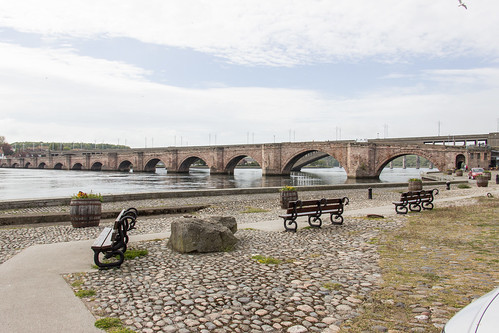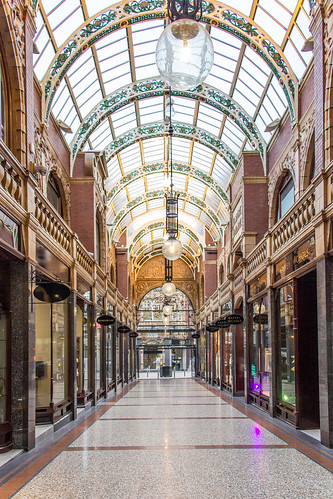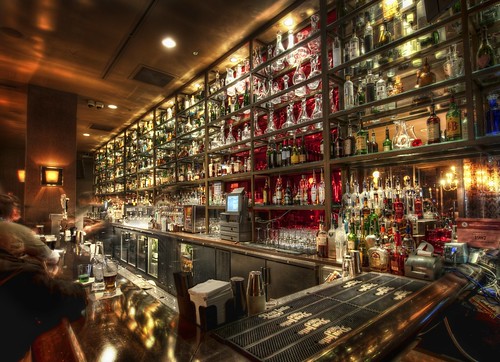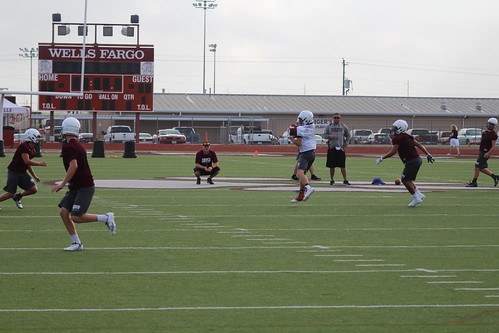Concert d’été
Concert d’été

Image by Magda2Genève
En solo sur le Léman
(Former National Geographic/YourShot Photographer)
Concert d’été

Image by Magda2Genève
En solo sur le Léman
(Former National Geographic/YourShot Photographer)
Berwick Bridge, Berwick-upon-Tweed, England

Image by Billy Wilson Photography
"Berwick Bridge, also known as the Old Bridge, spans the River Tweed in Berwick-upon-Tweed, Northumberland, England. The current structure is a Grade I listed stone bridge built between 1611 and 1624.
Prior to the construction of the stone bridge, the crossing was served by a series of wooden bridges. which were variously destroyed by flooding and military action. James Burrell became Surveyor of Works of the town in 1604, making him responsible for maintenance of the bridge. He was previously also occupied on the fortifications around Berwick before James VI and I ascended the throne of England, rendering them redundant.
In 1608, ten piers of the wooden bridge were destroyed by ice, and Burrell wrote to Robert Cecil, 1st Earl of Salisbury, then Secretary of State, to recommend the construction of a stone bridge. Arrangements were made in May 1608 to collect funds, but only £3,300 had been collected by 1611, but the Captain of Berwick Sir William Bowyer was unsatisfied with this progress, and a proposal was made for a bridge with seven stone arches over the deepest part of the river and the rest built of wood. After further collapse of the old wooden bridge, a modified proposal, for an entirely stone bridge with 13 arches, and estimated to cost a further £8,462, was put to the Privy Council, and on 16 May 1611 the King ordered £8,000 to be put towards the bridge. Work started on the bridge on 19 June that year, and by September 170 men were employed on its construction. At some point it was decided to build it with 15 arches instead.
In 1618, a further £4,000 grant was given, but this money had been used by 1620 and the Privy Council placed the bridge project under the supervision of the Bishop of Durham Richard Neile before any more money was given. Neile contracted Burrell and the leading mason Lancelot Bramston to finish the bridge at a cost of £1,750, and installed John Johnson of Newcastle as supervisor. The bridge was completed by September 1621 except for the parapets and paving, but a flood in October 1621 swept away some masonry and the wooden centring. In light of the accident, a grant of £3,000 was made and work restarted the following March, and the bridge was opened to traffic in 1624, although minor work continued for the next decade.
The bridge became less important for road traffic as the main route moved westwards, first to the concrete Royal Tweed Bridge built in the 1920s, and then in the 1980s a bypass took the A1 road out of Berwick altogether.
It is a Grade I listed building and a scheduled monument.
Berwick-upon-Tweed (/ˌbɛrɪk-/; Scots: Sooth Berwick, Scottish Gaelic: Bearaig a Deas) is a town in the county of Northumberland. It is the northernmost town in England, at the mouth of the River Tweed on the east coast, 2 1⁄2 miles (4 kilometres) south of the Scottish border (the hamlet of Marshall Meadows is the actual northernmost settlement). Berwick is approximately 56 mi (90 km) east-south east of Edinburgh, 65 mi (105 km) north of Newcastle upon Tyne and 345 mi (555 km) north of London.
The 2011 United Kingdom census recorded Berwick’s population as 12,043. A civil parish and town council were created in 2008 comprising the communities of Berwick, Spittal and Tweedmouth.
Berwick was founded as an Anglo-Saxon settlement during the time of the Kingdom of Northumbria, which was annexed by England in the 10th century. The area was for more than 400 years central to historic border wars between the Kingdoms of England and Scotland, and several times possession of Berwick changed hands between the two kingdoms. The last time it changed hands was when Richard of Gloucester retook it for England in 1482. To this day many Berwickers feel a close affinity to Scotland.
Berwick remains a traditional market town and also has some notable architectural features, in particular its medieval town walls, its Georgian Town Hall, its Elizabethan ramparts, and Britain’s earliest barracks buildings, which Nicholas Hawksmoor built (1717–21) for the Board of Ordnance." – info from Wikipedia.
Summer 2019 I did a solo cycling tour across Europe through 12 countries over the course of 3 months. I began my adventure in Edinburgh, Scotland and finished in Florence, Italy cycling 8,816 km. During my trip I took 47,000 photos.
Now on Instagram.
Become a patron to my photography on Patreon.
County Arcade Complex, Leeds, England

Image by Billy Wilson Photography
Cross Arcade from Queen Victoria Street. Grade II listed historic shopping arcade complex constructed 1898-1902.
"Leeds (/liːdz/) is the largest city in the county of West Yorkshire in Northern England, approximately 170 miles (270 km) north of central London. Leeds has one of the most diverse economies of all the UK’s main employment centres and has seen the fastest rate of private-sector jobs growth of any UK city. It also has the highest ratio of private to public sector jobs of all the UK’s Core Cities, with 77% of its workforce working in the private sector. Leeds has the third-largest jobs total by local authority area, with 480,000 in employment and self-employment at the beginning of 2015. Leeds is ranked as a High Sufficiency level city by the Globalization and World Cities Research Network. Leeds is the cultural, financial and commercial heart of the West Yorkshire Urban Area. Leeds is served by five universities, it has the UK’s fourth largest student population and the country’s fourth largest urban economy.
Leeds was a small manorial borough in the 13th century, and in the 17th and 18th centuries it became a major centre for the production and trading of wool, and in the Industrial Revolution a major mill town; wool was still the dominant industry, but flax, engineering, iron foundries, printing, and other industries were also important. From being a market town in the valley of the River Aire in the 16th century, Leeds expanded and absorbed the surrounding villages to become a populous urban centre by the mid-20th century. It now lies within the West Yorkshire Urban Area, the United Kingdom’s fourth-most populous urban area, with a population of 2.6 million.
Today, Leeds has become the largest legal and financial centre outside London with the financial and insurance services industry worth £13 billion to the city’s economy. The finance and business service sector account for 38% of total output with more than 30 national and international banks located in the city, including an office of the Bank of England. Leeds is also the UK’s third-largest manufacturing centre with around 1,800 firms and 39,000 employees; Leeds manufacturing firms account for 8.8% of total employment in the city and is worth over £7 billion to the local economy. The largest sub-sectors are engineering, printing and publishing, food and drink, chemicals and medical technology. Other key sectors include retail, leisure and the visitor economy, construction, and the creative and digital industries. The city saw several firsts, including the oldest-surviving film in existence, Roundhay Garden Scene (1888), and the 1767 invention of soda water.
Public transport, rail and road communications networks in the region are focused on Leeds; the second phase of High Speed 2 will connect it to London via East Midlands Hub and Sheffield Meadowhall. Leeds currently has the third busiest railway station and the tenth busiest airport outside London." – info from Wikipedia.
Summer 2019 I did a solo cycling tour across Europe through 12 countries over the course of 3 months. I began my adventure in Edinburgh, Scotland and finished in Florence, Italy cycling 8,816 km. During my trip I took 47,000 photos.
Now on Instagram.
Become a patron to my photography on Patreon.
Belly Up to the Bar

Image by Trey Ratcliff
Special Advance Notice for Special Communities
I know you all are BUSY. Also, I know you like to come here and hang out with the community since we enjoy finding some of the best stuff, sharing tricks, techniques, and art with you. However, some people go the extra mile. For each little sub-community within Stuck In Customs, I try to do something extra special:
Newsletter Subscribers – I gave out a off coupon on something cool just to subscribers, and many acted on it! Cool! The Newsletter is free, so why not join? Besides that, I try to give advance notice on all sorts of things.
Facebook Fans – I gave these fine people an advance link to a new review I am doing, so they can see it before anyone else. The Fan page was started by a Dutch fan, and we are starting to do all sorts of things on it, including a fun discussion on Which Lens do you Want?
Twitter Followers – Many times throughout the week, I open it up for questions on the new book or anything in between. I think it is cool that I can have direct contact with so many people — I really try my best to answer most everyone! In addition, I sprinkle in all sorts of inspirational art finds and do my best to keep things fun and light – the way the internet should be!
If you are a member of one or more of these special sub-communities – let me know any other ideas you might have!
Chicago Party in a Few Days!
Woo! This will be fun! The New York and Austin parties were exciting and fun – I really enjoyed getting to meet people and the like. Chicago is next. You can either RSVP on the Facebook Event Page or see more info here on the site!
Daily Photo – Belly up to the Bar
Here is another shot from the ultra-cook Hotel Sax, where we are having the party mentioned above. The Hotel Sax has tons of these really swanky rooms that have a very nice feeling about them. Now, I don’t drink alcohol at all… which makes awesome bars like this a little disappointing… but not so disappointing if there is someone interesting to talk to!
I actually, on occasion, end up with people who spend half the time talking about previous drinking experiences while having a drinking experience. I suppose this becomes a recursive function at some point… and I guess it’s no different than going out with photographers and talking about other photography outings!
From the blog at www.stuckincustoms.com
Football

Image by TheMert
 Cinderella Solution Diet Review 2020 – Will It Really Work for You?
Cinderella Solution Diet Review 2020 – Will It Really Work for You? EZ Battery Reconditioning Review – Ridiculously Powerful Technique to Revive Dead Batteries?
EZ Battery Reconditioning Review – Ridiculously Powerful Technique to Revive Dead Batteries? Resurge Supplement Review 2020 – Does This Dinner Ritual Actually Work?
Resurge Supplement Review 2020 – Does This Dinner Ritual Actually Work? Text Chemistry Review (2020) – Does It Make You Irresistible to Men?
Text Chemistry Review (2020) – Does It Make You Irresistible to Men? 8 Week Keto Custom Plan Review – Does It Really Work?
8 Week Keto Custom Plan Review – Does It Really Work?